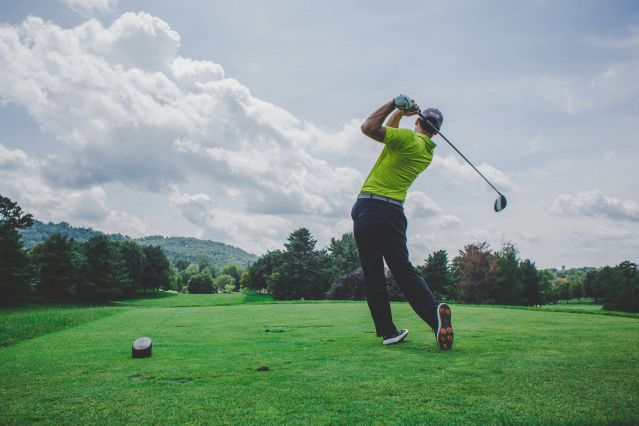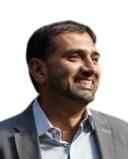Bias
A Psychological Bias Helps Golfers Make Putts
Examining the oversized impact of loss aversion in the performance of athletes.
Updated May 20, 2024 Reviewed by Tyler Woods
Key points
- Research shows that the pain people feel after a loss exceeds the pleasure they get from an equivalent gain.
- Loss aversion affects decision-makers in many contexts, including sports.
- Two studies suggest that loss aversion affects the effort and subsequent performance of professional golfers.

When introducing my students to the principles of human judgment and decision-making, I like to start the class session by inviting them to play a hypothetical game. Here’s how the game works: we flip a fair coin. If it lands “heads,” I give the student $100. If it lands “tails,” the student gives me $100.
I ask students to raise their hands if they would be willing to play the game with me. Usually, there are no raised hands (or just one or two brave ones), so I sweeten the pot. I offer students $120 if the coin lands “heads” while still only demanding $100 if it lands “tails.” A few more hands go up. I continue in this manner, adding another $20 on each iteration and watching more and more hands shoot into the air. I generally observe that most students in the class only become willing participants when the game affords them a potential payout of about $200 or even $250 in exchange for a maximum loss of $100.
Although my students’ decisions could certainly be driven by concerns about cash flow and liquidity, the results of my classroom exercise are consistent with the core premise of loss aversion, namely that “losses loom larger than equivalent-sized gains.” Loss aversion is one of the basic tenets of prospect theory, a descriptive model of how people make decisions involving risky options (or prospects) that was developed by psychologists Amos Tversky and Daniel Kahneman in the 1970s. The work helped Kahneman become the first (and, to date, the only) psychologist to win the Nobel Prize in Economics in 2002. Although some academics have questioned its prevalence and magnitude, loss aversion has received substantial empirical support across many different disciplines over the years.
Here, I discuss loss aversion in the context of sports performance. Based on anecdotal evidence, many athletes and fans are susceptible to loss aversion. Longtime Major League Baseball announcer Vin Scully famously said, “Losing feels worse than winning feels good.” A similar sentiment has been expressed by star professional athletes from Jimmy Connors (tennis) and Jalen Hurts (football) to Chris Paul and Larry Bird (basketball). Researchers have even shown that the negative effect of anticipated loss aversion (i.e., the worry that one’s preferred team will lose) on sporting event attendance can sometimes overpower the positive value that spectators derive from watching how uncertain events unfold and are resolved (i.e., the uncertain outcome hypothesis).

Not only can loss aversion affect perceptions of outcomes by athletes and fans, research suggests that it can even impact the performance of athletes. Two of my favorite academic papers that make this point examine loss aversion among professional golfers. The first is a 2011 American Economic Review article with the brilliant title, “Is Tiger Woods loss averse? Persistent bias in the face of experience, competition, and high stakes.” The authors, Devin Pope (University of Chicago Booth School of Business) and Maurice Schweitzer (University of Pennsylvania Wharton School of Business), analyze a rich dataset of 2.5 million putts that were attempted by 400+ professional golfers in tournaments between 2004 and 2009. Their unique dataset includes precise location information about the distance from the putt to the hole, along with other factors about the golf course—in essence, this information tells the authors how easy or difficult the putt was to make.
For readers unfamiliar with golf, a little background is in order: professional tournaments typically consist of four rounds of golf, with each round involving 18 different holes. For historical reasons, each hole is pre-assigned a rating that is known as “par,” which serves as a reference point and indirectly communicates to the golfer the score (or the number of total shots) it usually takes to get the ball into the hole from the starting tee. Depending on the hole’s length and difficulty, the par rating is usually set at three, four, or five shots.
Pope and Schweitzer surmised that these par scores might act as a psychological reference point for golfers. In reality, it makes no difference if a golfer scores a three followed by a five on successive par four holes, or if they score a four followed by another four. In both cases, the golfer’s total score is eight. However, earning a bogey—or a score one shot above par—on a hole may feel more like a loss since the golfer missed par and, therefore, failed to meet the expectation for that hole.
The authors reasoned that if golfers are truly motivated by loss aversion, then they should be more effortful and ultimately more accurate when putting for a par rating as opposed to putting for birdie (i.e., for a score that is one shot under par). The logic is that a golfer who misses on a birdie chance can still end up scoring a par on that hole, which would not be encoded as a loss. However, the best score that a golfer can get if he misses on a par chance is a bogey, which feels like a loss. Fueled by loss aversion, golfers should try harder and be more successful on par putts as opposed to birdie putts.
This prediction was supported by the authors’ analyses. After accounting for the location from which the putt was attempted relative to the hole, it turns out that professional golfers are about 2 percentage points less successful on birdie putts as compared to par putts! The article impressively demonstrates the robustness of this finding after controlling for a great number of factors that might potentially affect putting accuracy, from differences in player ability, differences across holes, and players’ position in the tournament. The authors also present evidence that their results are not due to psychological factors such as overconfidence or nervousness. The conclusion: “Even the very best golfers—including Tiger Woods” exhibit loss aversion.
Building on this fascinating finding, a more recent paper by Ryan Elmore and Andrew Urbaczewski from the University of Denver tested for loss aversion another way—by specifically examining two courses, Pebble Beach Golf Links and Oakmont Country Club, that had hosted the men’s U.S. Open tournament on multiple occasions. The authors realized that the United States Golf Association (USGA) had reduced the par rating of a single hole on each golf course from a five to a four without fundamentally changing the layout of the hole. They took advantage of this natural experiment to evaluate whether average scores on these holes differed before versus after the change. They found that the average score for this hole decreased by .23 strokes for the Pebble Beach hole and by .13 strokes for the Oakmont hole. This may not seem like much of a difference, but for both courses, it was the only hole out of 18 that played significantly easier in the tournament after (vs. before) the change. When each hole’s par rating was reduced to a four, golfers apparently responded with extra effort to ensure that they avoided a “loss” and ended up with a score for the hole that was at or below par.
Collectively, this research provides compelling evidence that loss aversion can affect the performance of professional golfers. It provides a good reminder to athletes—and decision makers more broadly—to watch out for salient reference points in their environment that may subtly influence whether outcomes are encoded as losses and unwittingly alter their expectations, perceptions, and effort.
References
Elmore, Ryan, and Andrew Urbaczewski (2021), "Loss aversion in professional golf," Journal of Sports Economics, 22 (2), 202-217.
Kahneman, Daniel and Amos Tversky (1979), "Prospect theory: An analysis of decision under risk," Econometrica, 47 (2), 363-391.
Pope, Devin G. and Maurice E. Schweitzer (2011), "Is Tiger Woods loss averse? Persistent bias in the face of experience, competition, and high stakes." American Economic Review, 101 (1), 129-157.




